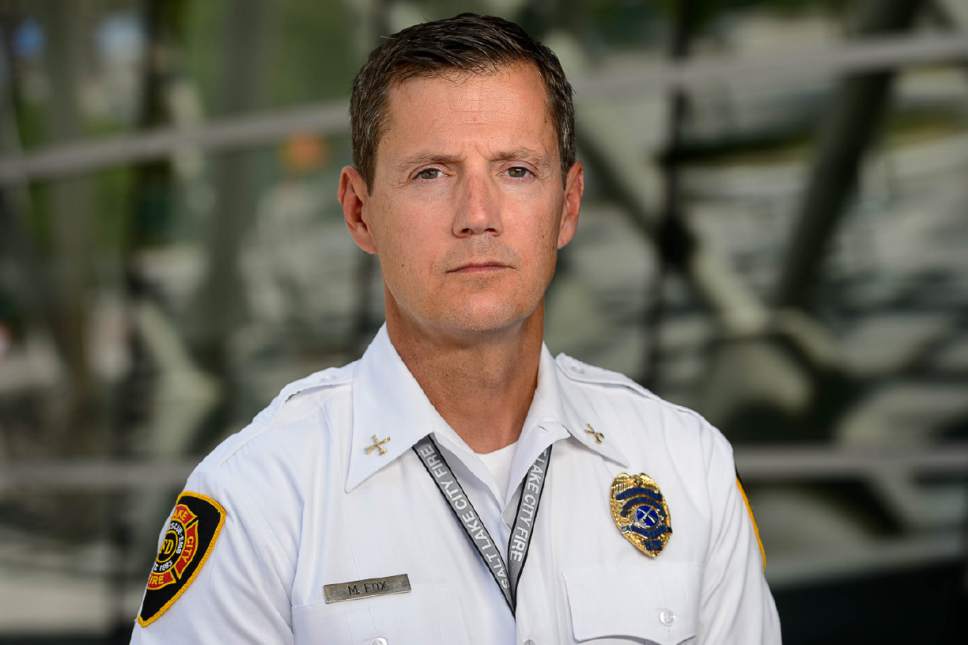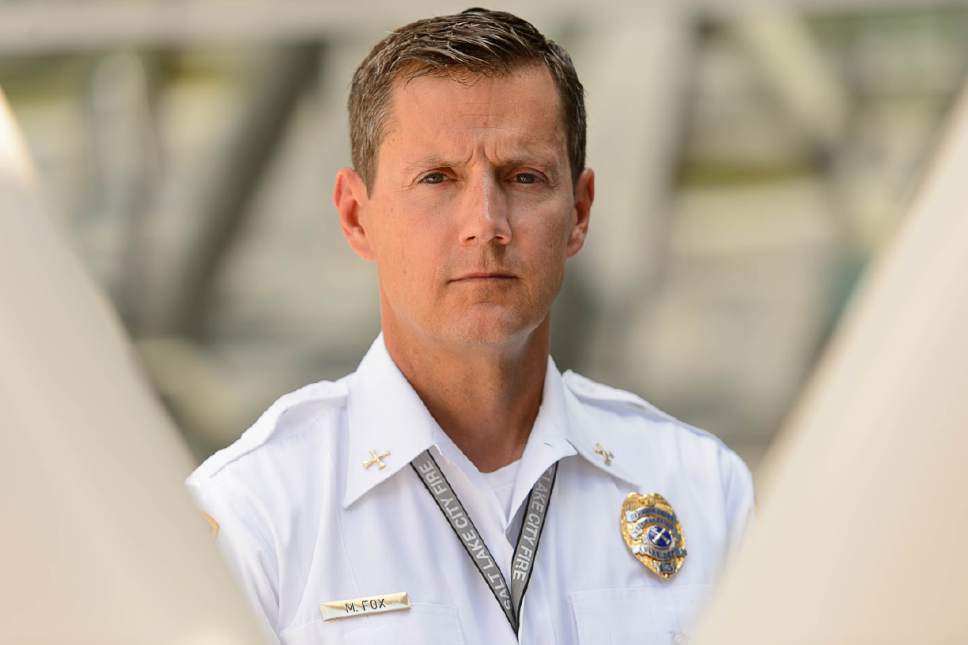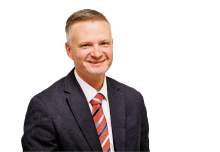This is an archived article that was published on sltrib.com in 2017, and information in the article may be outdated. It is provided only for personal research purposes and may not be reprinted.
Michael Fox carries the aftermath of 9/11 with him, in his mind and in his body.
After the towers fell, search and rescue teams from across the country descended on New York, including 62 members of Utah Task Force One.
For 10 days after the terrorist attacks, the crews clawed across the smoldering pile of skyscraper rubble the size of Salt Lake City's Liberty Park.
Fox, who is a rescue specialist, would climb into the gaps and voids along with New York Fire Department hazardous materials crews. They traversed the underground subway system, the parking garages, and ventured into crevices and voids.
The dust was choking, the building still belching smoke. Respirators quickly clogged with dust and debris, glass that had been ground to dust and asbestos. Initially, the hope was to find survivors, but the search yielded only fragments of victims' remains.
Then, in 2015, the 45-year-old Fox noticed a small growth on his eyelid and went to get it checked. Biopsies showed that he had contracted a rare form of non-Hodgkin lymphoma that doesn't usually hit until patients are in their mid-60s. Doctors said the disease was almost certainly a result of his exposure to toxins at the World Trade Center pile.
He's far from alone.
As many as 40 of the 62 members of the Utah search and rescue team from 9/11 are suffering serious health effects due to their exposure, and others cope with post-traumatic stress disorder and other lingering digestive and respiratory ailments, according to Assistant Salt Lake City Fire Chief Clair Baldwin, who was on the team.
Rescuers who were in their 20s when deployed are developing lymphoma. The only female member of the team is now battling breast cancer. Another was diagnosed with pancreatic cancer shortly after retirement and died. In all, Baldwin says, about 17 of the firefighters have developed some kind of cancer.
Baldwin himself has developed a particular kind of skin cancer related to exposure after 9/11 and has had numerous growths removed.
Utah's Workers Compensation program has refused to cover any of the illnesses, hanging the denial on the technicality that the firefighters weren't working in Utah at the time of their exposure.
Fortunately, Congress in 2010 passed the James Zadroga Act — despite opposition at the time from Sens. Orrin Hatch and Bob Bennett — which provided free health screening for first responders and treatment for diseases resulting from exposure to toxins at the site.
Michael Barasch is a New York attorney and was a friend of James Zadroga, the firefighter whose death in 2006 was the first linked to exposure at the World Trade Center. When Zadroga died, an autopsy found glass, asbestos, benzene and other carcinogens in his lungs.
"The [Environmental Protection Agency] assured everyone that — quote — the air is safe without getting into the reasons why," Barasch said in an interview last week. "The fact is that these people were given blatantly untrue accounts of the safety of the air and, as a result, not only the first responders in New York [were exposed], but the local residents, the office workers and the wonderful [rescue] teams from all over the country, the hundreds and hundreds of volunteers who came to New York from all over the country just to help out."
Barasch's firm represents about 10,000 people, including 13 young men and women who were students at a school near the World Trade Center that reopened a week after the attacks without cleaning the air-conditioner vents. Those students, now in their 20s, are developing breast and testicular cancer related to their exposure.
Earlier this year, he was in Salt Lake City, speaking at a national Federal Emergency Management Agency conference with task forces around the country. Nearly all of them had been at ground zero, but many had still not bothered to sign up for coverage under the Zadroga Act.
Baldwin estimates that about half of the 62 Utah firefighters have not signed up — including himself.
"In general, it kind of goes with our general mentality in firefighting, that we signed up knowing we were going to be exposed to stuff when we started our careers," he said. "I'm not a fatalist, but I know spending 35 years fighting fires, and being around what I've been around, my chances of contracting something are pretty good."
But Baldwin plans to change that. Not only is he signing up this week, on Monday he sent a letter to the Utah Task Force One team members who went to ground zero, informing them once again about the program and encouraging them to get registered.
"It's pretty silly to not do it," Baldwin says.
Fox agrees. He had signed up for the screening program early on and said that, had he not, his lymphoma could have gone undetected for months, even years. Instead he was diagnosed early and, after an aggressive regimen of six rounds of chemotherapy and a bone marrow transplant, he has been in remission for a year and a half.
"They absolutely should be getting tested every year. It's well worth it to find something like that early," Fox said. "No one can do the treatments for you. No one can do chemo for you … but just to have that peace of mind when you're going through something like this makes a huge difference."
Twitter: @robertgehrke









